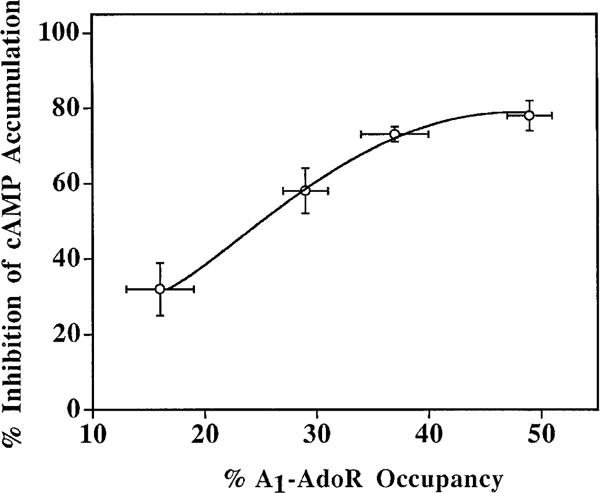Fig. 6.

The relationship between the inhibition of (−)-isoproterenol-stimulated cAMP accumulation and receptor occupancy by p-DITC-ADAC in DDT cells. Cells were pretreated with 0.1, 0.5, 1.0, or 2.0 μM p-DITC-ADAC for 1 hr at 37° followed by six washes with HBSS. The inhibition of cAMP accumulation by the A1-AdoRs occupied by pretreatment with p-DITC-ADAC was determined by incubating the cells with 50 μM rolipram, 1 μM CPX, and 5 μM (−)-isoproterenol at 37° for 10 min. The accumulated cAMP was determined as described in Experimental Procedures. The A1-AdoR occupancy by p-DITC-ADAC was determined as the percent loss of specific [3H]CPX (5 nM) binding to cell membranes compared with untreated controls. Values are mean ± standard error of three or four separate experiments, each performed in duplicate or triplicate. The control (−)-isoproterenol (5 μM)-stimulated cAMP formation was 50 ± 5 pmol/mg of protein/min, and the control-specific [3H]CPX binding was 195 ± 4 fmol/mg of protein. The maximal inhibition of (−)-isoproterenol-stimulated cAMP accumulation in the presence of 5 μM p-DITC-ADAC was 82 ± 3% (three experiments).
